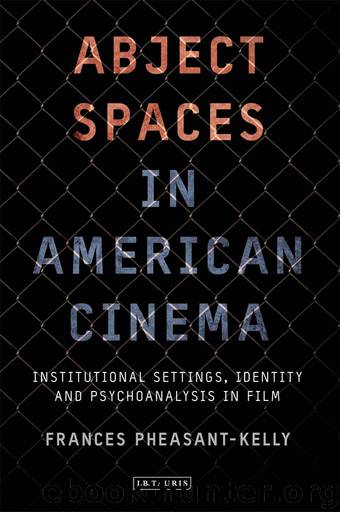Abject Spaces in American Cinema by Frances Pheasant-Kelly

Author:Frances Pheasant-Kelly [Pheasant-Kelly, Frances]
Language: eng
Format: epub
ISBN: 9780857733672
Publisher: I.B.Tauris
Chapter 6
Resisting the Gaze: The Last Castle
Perhaps more than any other film discussed in this book, The Last Castle (2001, directed by Rod Lurie) comes closest to Foucault’s1 account of control through surveillance and knowledge. The Last Castle is set in a military prison in which discipline is mediated through almost constant observation of certain spaces, with the yard being the focal point. While the film refers to space and time, it also questions surveillance as an effective means of control, for the yard becomes a site of conflict and disorder in the final scenes under the direction of its central protagonist, Eugene Irwin (Robert Redford). Irwin is a high-ranking military officer who is in prison for disobeying an order, which resulted in the loss of life. Despite this failing, both the prisoners and prison guards, and initially also the warder, Colonel Winter (James Gandolfini), regard him with awe. Within a short time it becomes apparent to Irwin that Winter’s disciplinary regime depends not only on surveillance but also on physical cruelty, even murder. Irwin therefore aims to overthrow the prison regime through a strategic transgression of its boundaries, and to fly the prison flag upside down (as a sign of distress).
Irwin’s voiceover at the beginning of the film describes the prison as a type of castle: ‘the only difference between this castle [the prison] and all the rest is that they were built to keep people out – this castle was built to keep people in.’ The concept of the boundary and the division of space is therefore established in the opening scenes. The film essentially suggests that the separation of good and evil is not always clear and is a motif that is repeated throughout. While the boundary, a central tenet of Kristeva’s2 theory of abjection, is pivotal to the film’s narrative, The Last Castle lacks a focus on some of the more corporeal aspects of abjection, such as bodily fluids, uterine metaphors and anality. Furthermore, the noir aesthetic that typifies Lock Up, and to a lesser extent The Shawshank Redemption, is confined to the cellblocks and visitor spaces. The Last Castle also differs from these films in that it departs from scenes of enclosed spaces to focus instead on the open space of the yard. The visual iconography therefore exists at the opposite extreme of abjection to Lock Up. As an institution film, however, the main signifiers of abjection and repression are still evident, but channelled primarily through the concept of the boundary.
The border in both its physical and psychical manifestations is a key concept in Kristeva’s theory of abjection. Psychically, it is mostly relevant to the bounding of the self in the development of subjectivity, and to its disintegration in the return of the repressed. Kristeva also refers to the physical border, usually in relation to the body and its transgression. In this film the border, as a way of marking subjectivity, is represented in quite a literal sense, namely in the stones and mortar of the prison itself.
Download
This site does not store any files on its server. We only index and link to content provided by other sites. Please contact the content providers to delete copyright contents if any and email us, we'll remove relevant links or contents immediately.
The Art of Boudoir Photography: How to Create Stunning Photographs of Women by Christa Meola(18537)
Red Sparrow by Jason Matthews(5390)
Harry Potter 02 & The Chamber Of Secrets (Illustrated) by J.K. Rowling(3620)
In a Sunburned Country by Bill Bryson(3481)
Drawing Cutting Edge Anatomy by Christopher Hart(3454)
Figure Drawing for Artists by Steve Huston(3381)
Harry Potter and the Prisoner of Azkaban (Book 3) by J. K. Rowling(3304)
The Daily Stoic by Holiday Ryan & Hanselman Stephen(3230)
Japanese Design by Patricia J. Graham(3109)
The Roots of Romanticism (Second Edition) by Berlin Isaiah Hardy Henry Gray John(2878)
Make Comics Like the Pros by Greg Pak(2852)
Stacked Decks by The Rotenberg Collection(2811)
Draw-A-Saurus by James Silvani(2655)
Harry Potter and the Deathly Hallows (7) by J.K. Rowling(2641)
Tattoo Art by Doralba Picerno(2600)
On Photography by Susan Sontag(2575)
Churchill by Paul Johnson(2506)
The Daily Stoic by Ryan Holiday & Stephen Hanselman(2459)
Drawing and Painting Birds by Tim Wootton(2438)
